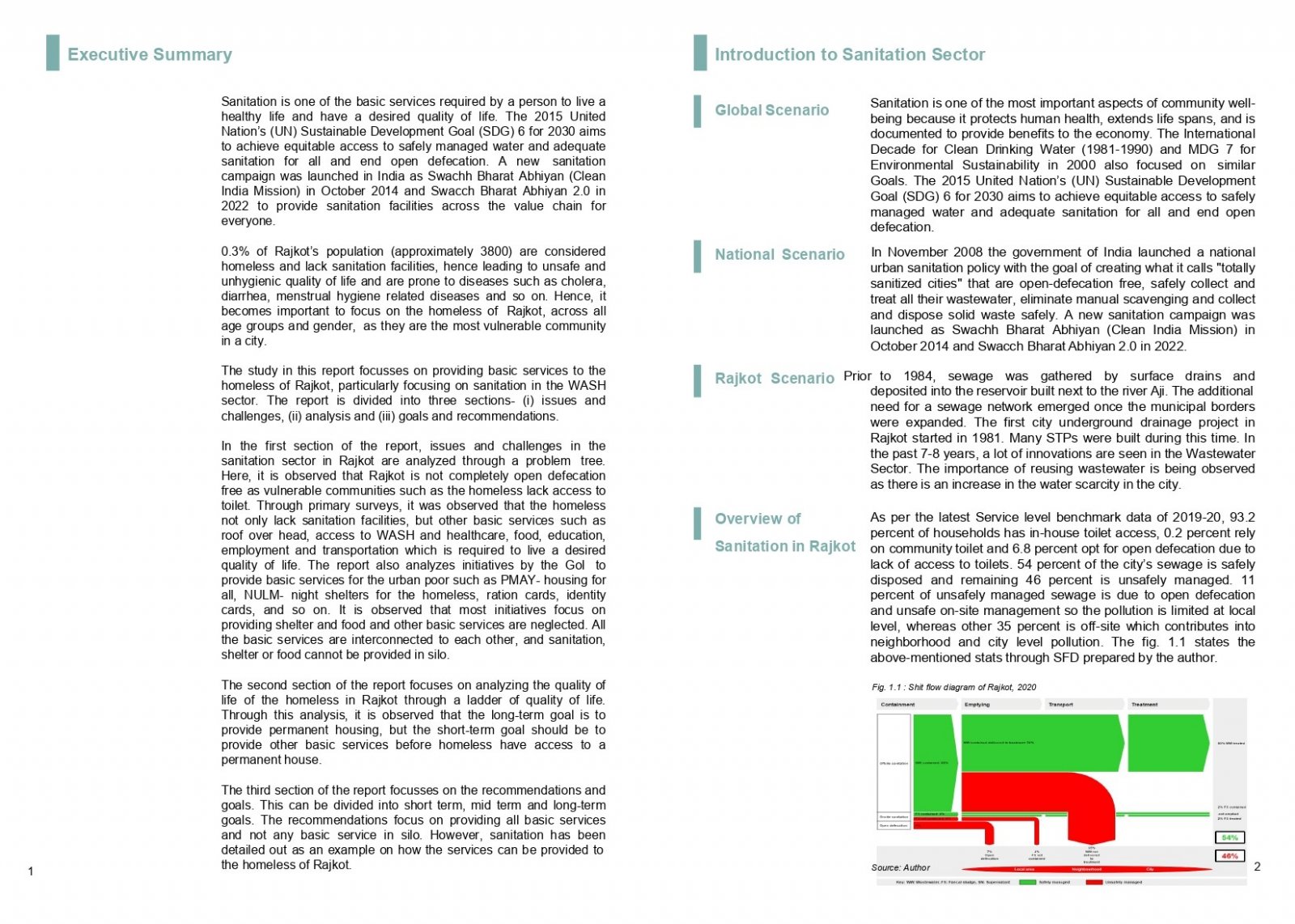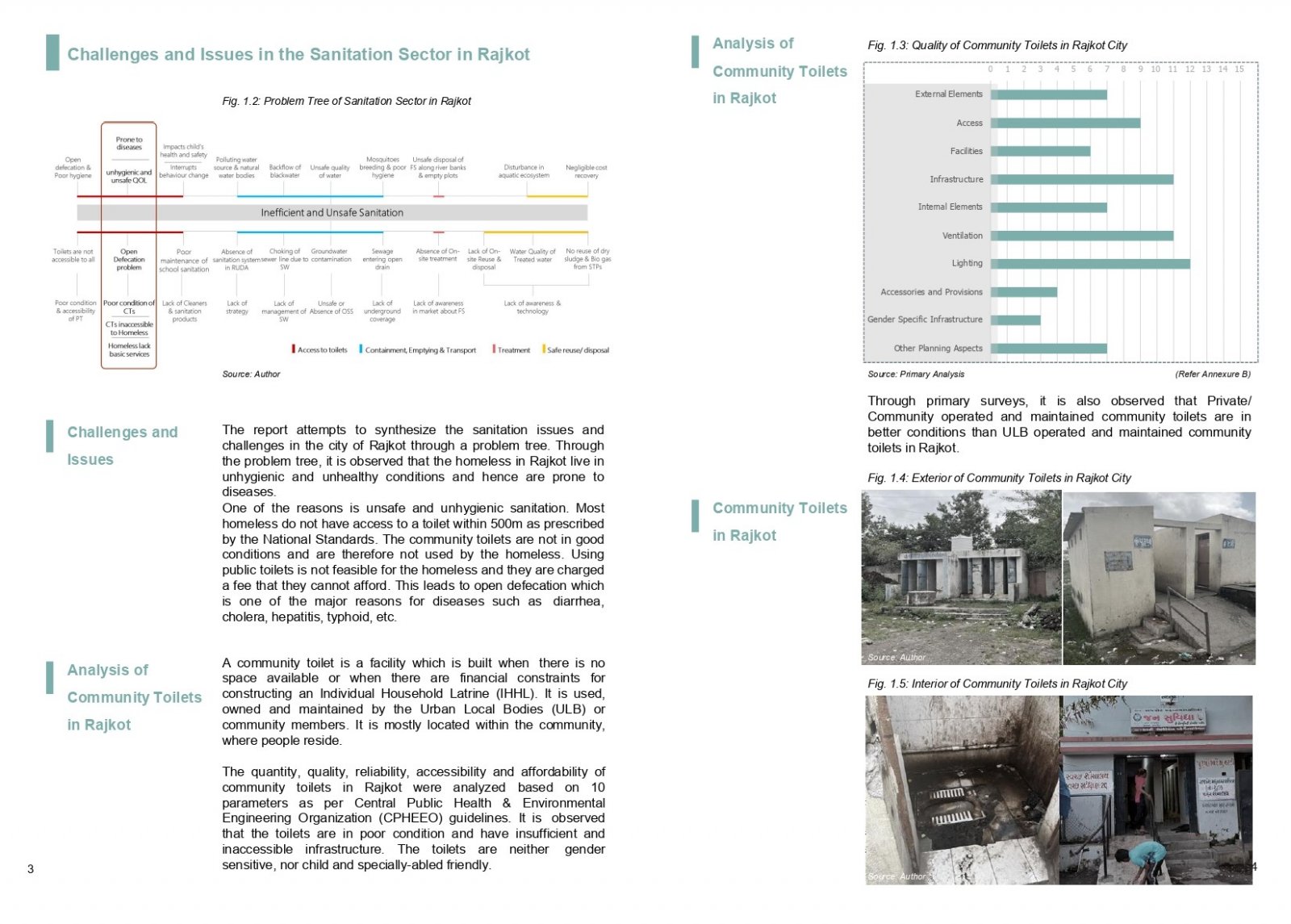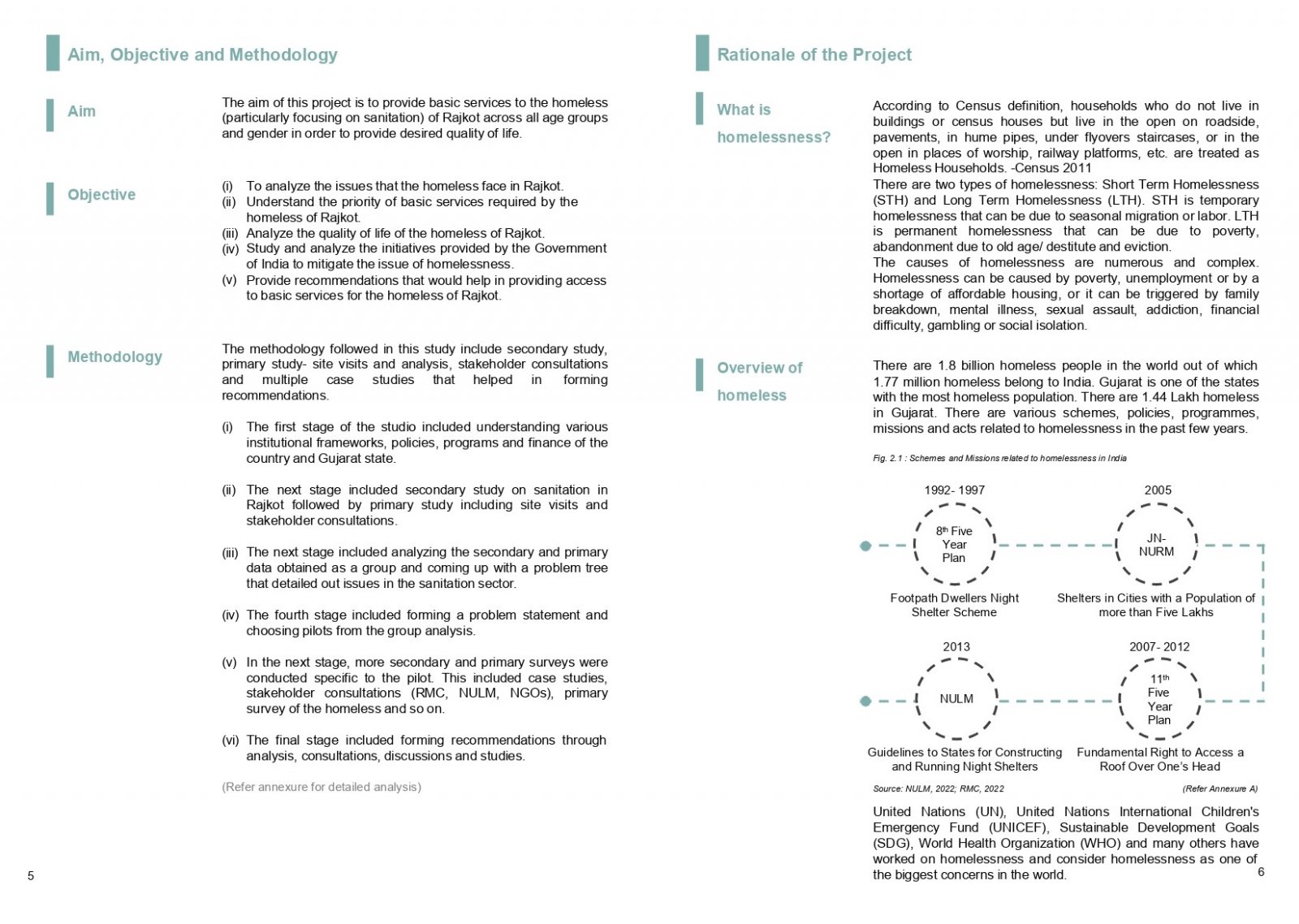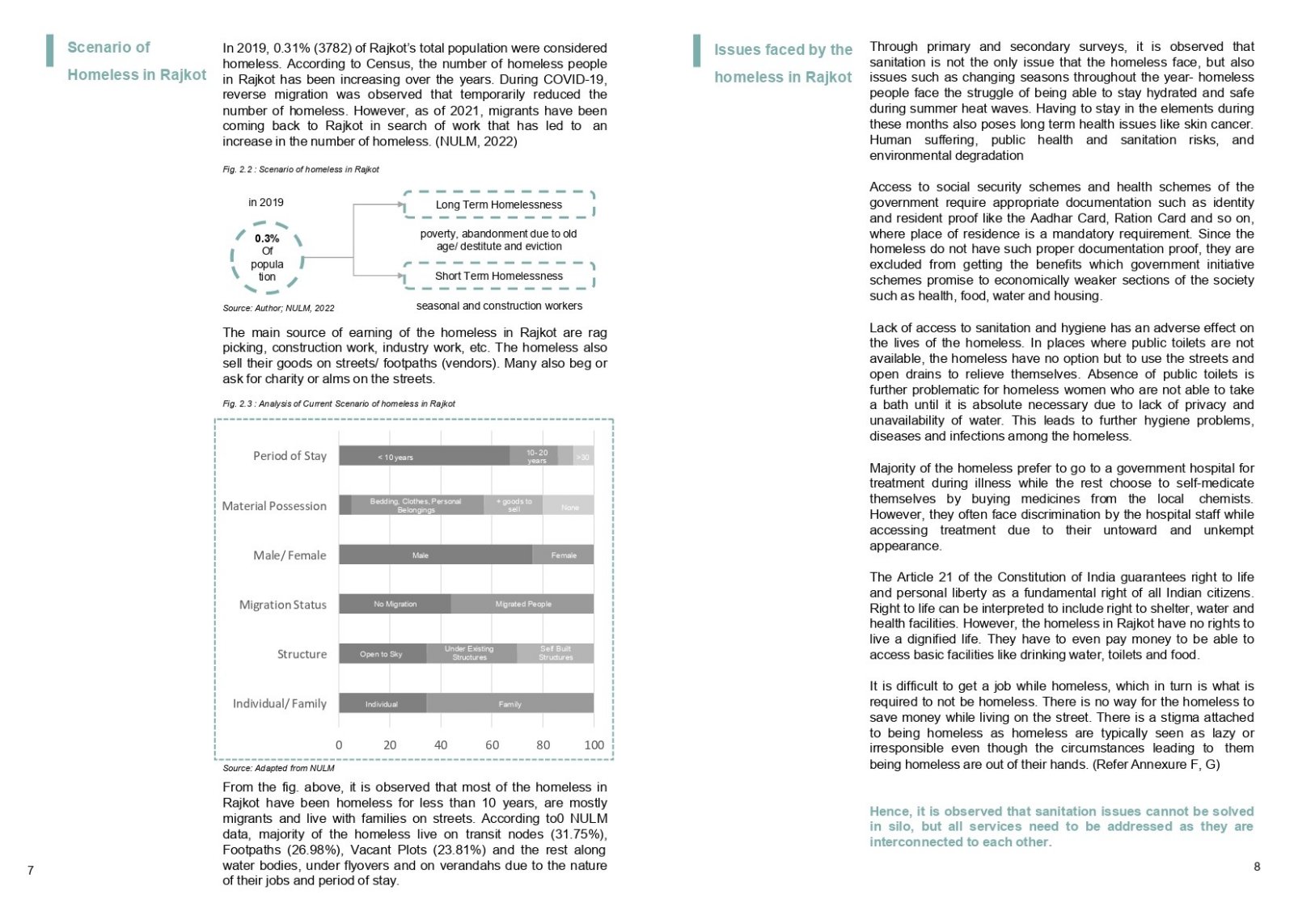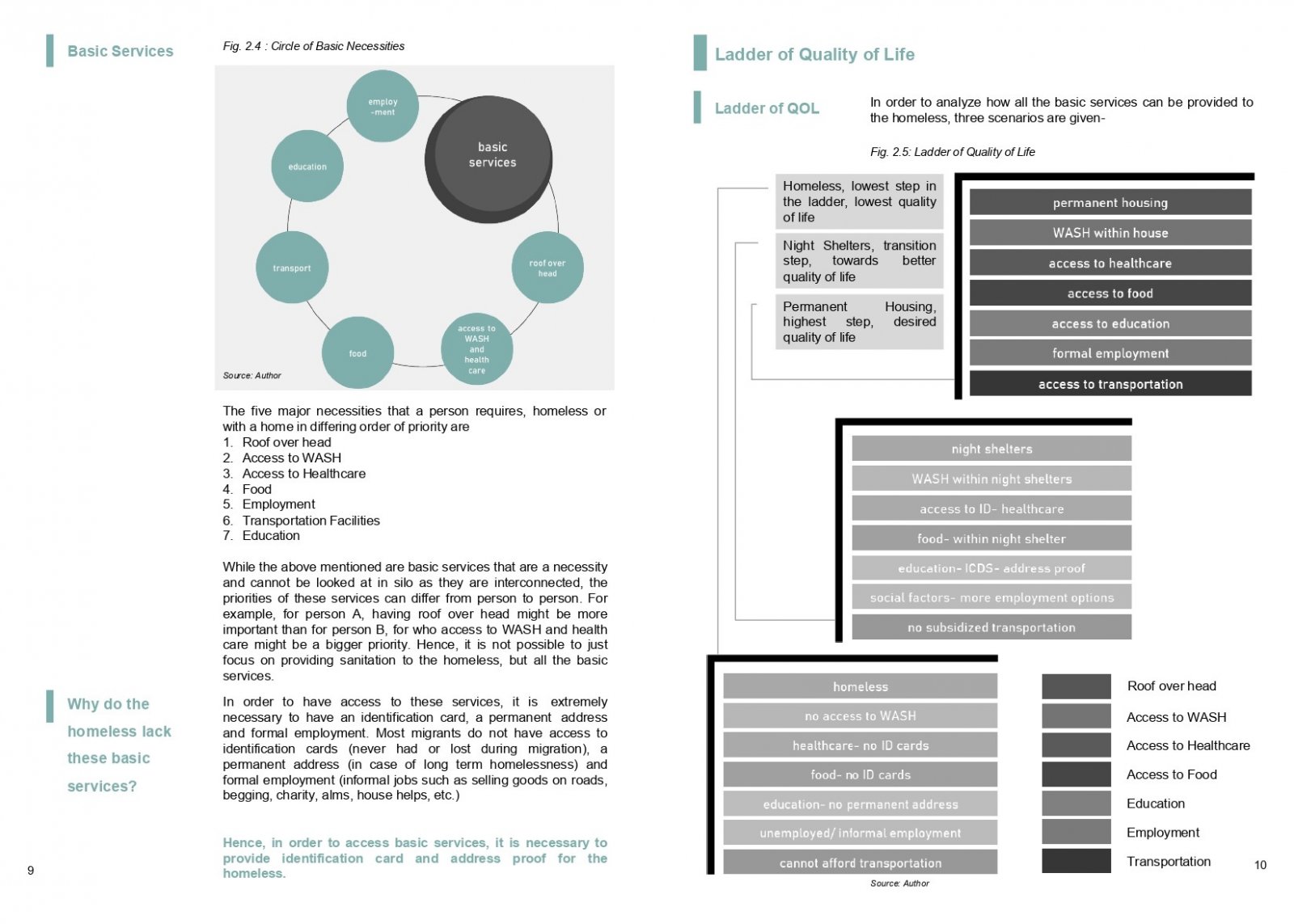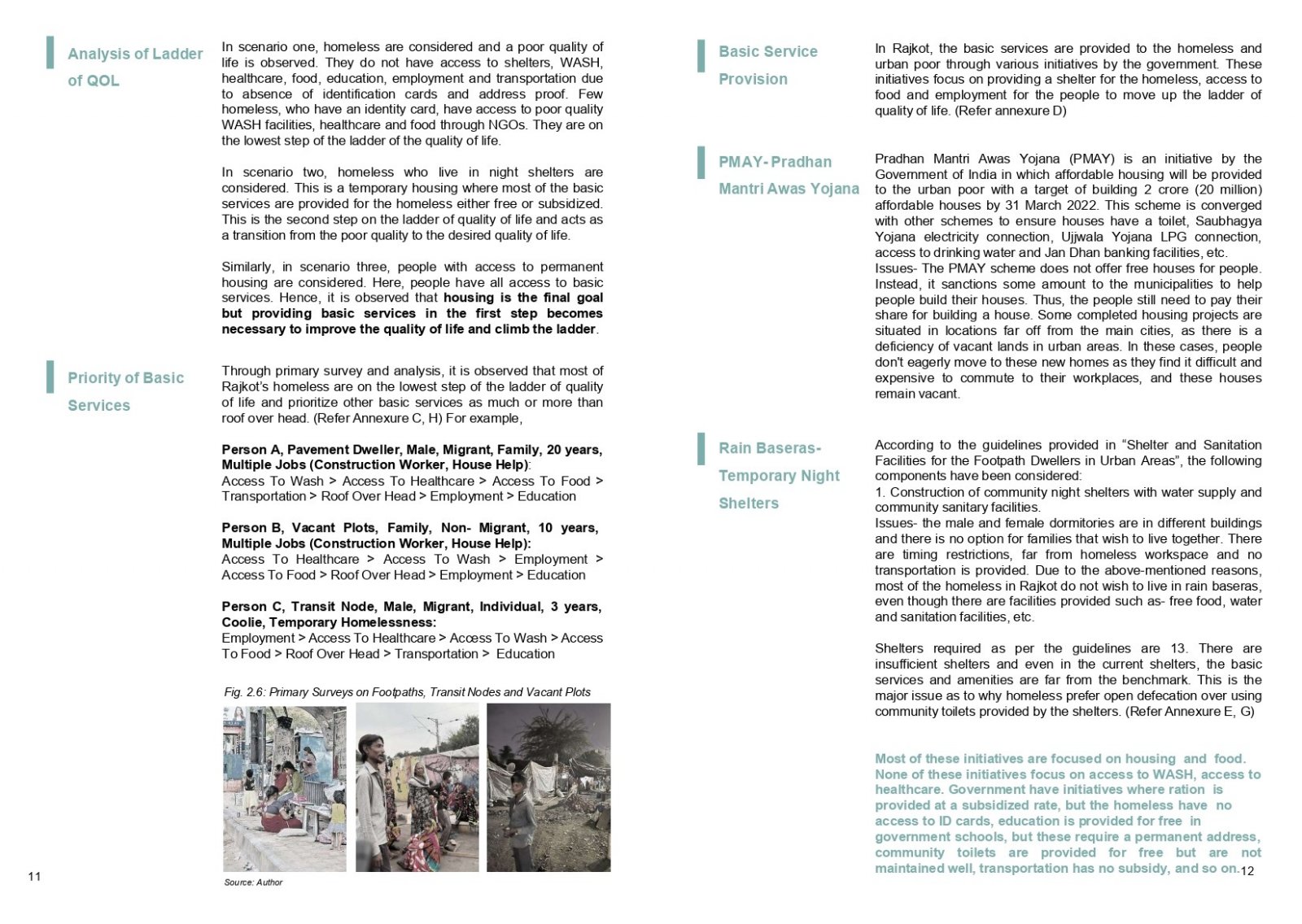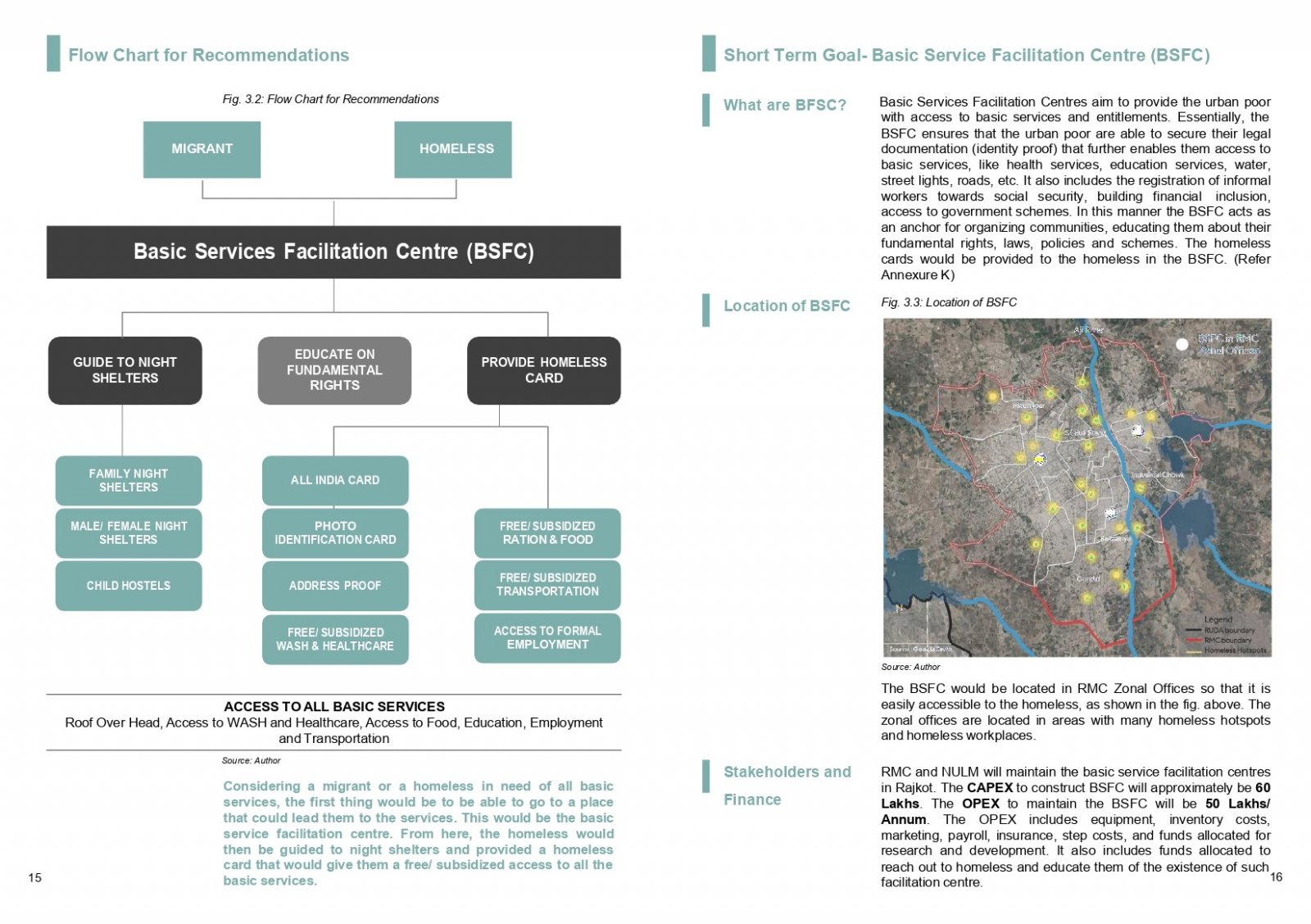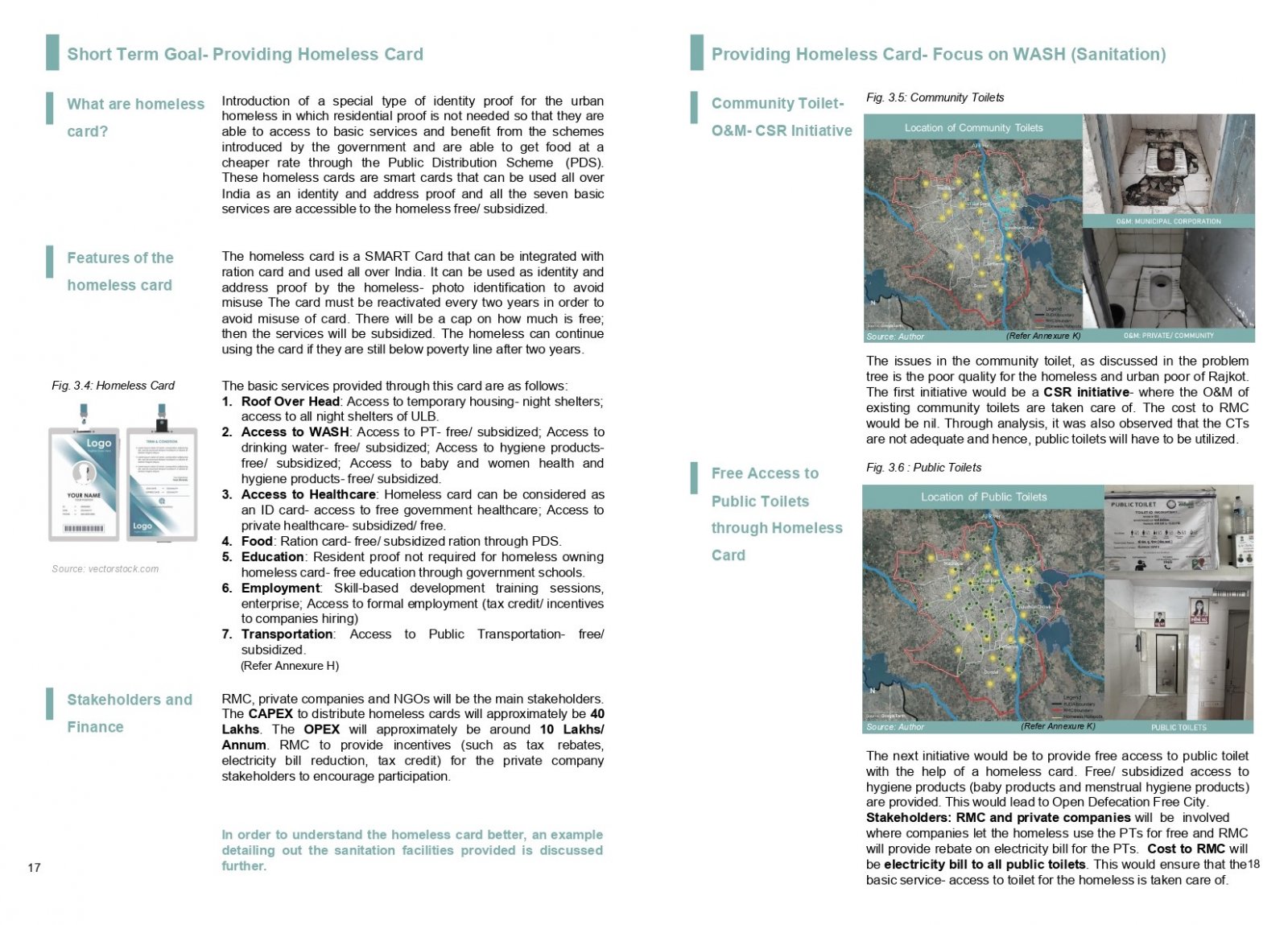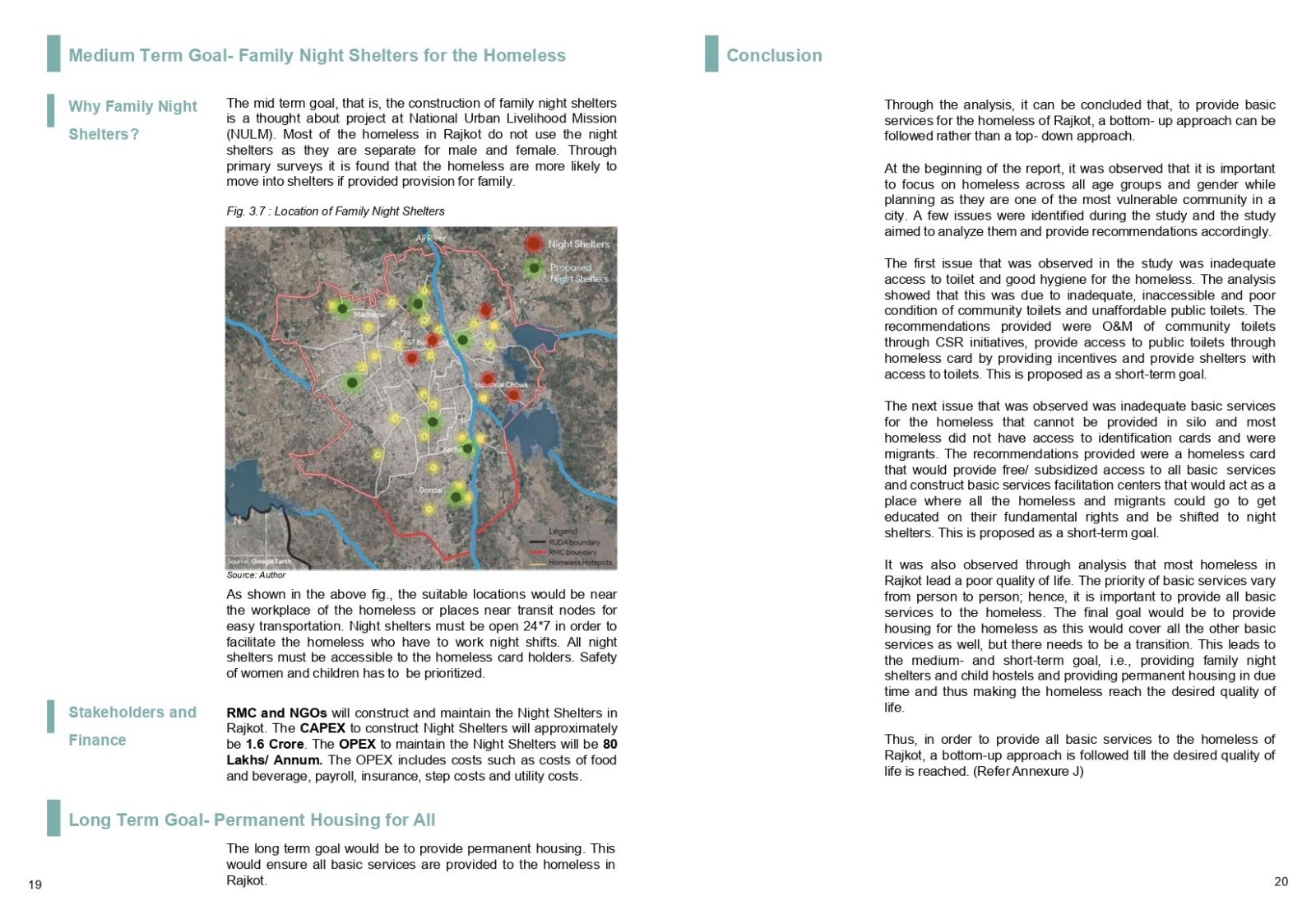Your browser is out-of-date!
For a richer surfing experience on our website, please update your browser. Update my browser now!
For a richer surfing experience on our website, please update your browser. Update my browser now!
0.3% of Rajkot’s population (approximately 3800) are considered homeless and lack sanitation facilities, hence leading to unsafe and unhygienic quality of life and are prone to diseases such as cholera, diarrhea, menstrual hygiene related diseases and so on. Hence, it becomes important to focus on the homeless of Rajkot, across all age groups and gender, as they are the most vulnerable community in a city. The study focusses on providing basic services to the homeless of Rajkot, particularly focusing on sanitation in the WASH sector. The portfolio is divided into three sections- (i) issues and challenges, (ii) analysis and (iii) goals and recommendations. In the first section, issues and challenges in the sanitation sector in Rajkot are analyzed through a problem tree. Here, it is observed that Rajkot is not completely open defecation free as vulnerable communities such as the homeless lack access to toilet. Through primary surveys, it was observed that the homeless not only lack sanitation facilities, but other basic services such as roof over head, access to WASH and healthcare, food, education, employment and transportation which is required to live a desired quality of life. The report also analyzes initiatives by the GoI to provide basic services for the urban poor such as PMAY- housing for all, NULM- night shelters for the homeless, ration cards, identity cards, and so on. It is observed that most initiatives focus on providing shelter and food and other basic services are neglected. All the basic services are interconnected to each other, and sanitation, shelter or food cannot be provided in silo. The second section of the report focuses on analyzing the quality of life of the homeless in Rajkot through a ladder of quality of life. Through this analysis, it is observed that the long-term goal is to provide permanent housing, but the short-term goal should be to provide other basic services before homeless have access to a permanent house. The third section of the report focusses on the recommendations and goals. This can be divided into short term, mid term and long-term goals. The recommendations focus on providing all basic services and not any basic service in silo. However, sanitation has been detailed out as an example on how the services can be provided to the homeless of Rajkot.
View Additional Work